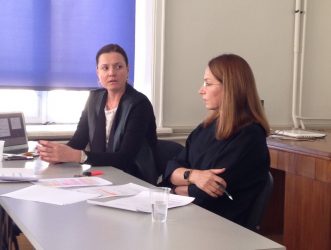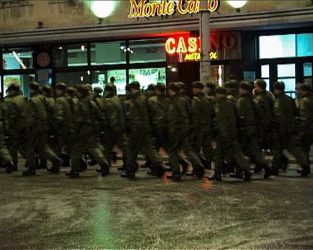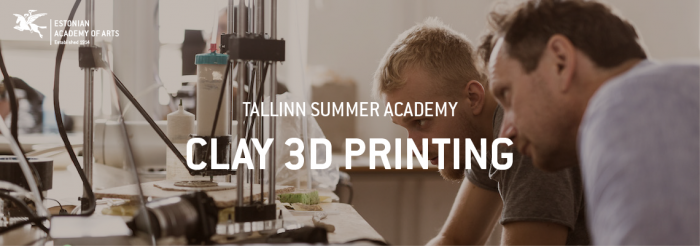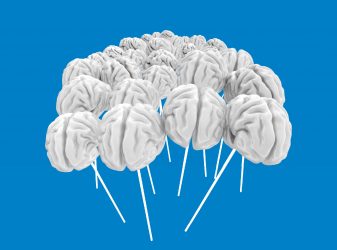AksessuaaridisainAnimatsioonArhitektuur ja linnaplaneerimineArhitektuuriteaduskondAvatud akadeemiaDesign and Technology FuturesDisainiteaduskondDoktorikoolDoktorikoolEhte- ja sepakunstErialadERKI MoeshowFotograafiaGaleriiGraafikaGraafiline disainHaldusosakond ja töökojadInstallatsioon ja skulptuurIT osakondJätkusuutliku disaini laborJoonistamineKaasaegne kunstKeraamikaKlaasKommunikatsiooniosakondKunstiharidusKunstiteadus ja visuaalkultuurKunstikultuuri teaduskondMaalMoedisainMuinsuskaitse ja konserveerimineÕppeosakondRaamatukoguRahandusosakondRektoraatSisearhitektuurStsenograafiaTasapinnaliste tehnoloogiate tehnokeskusTeadus- ja arendusosakondTegevuskunstTekstiilidisainTootedisainTugistruktuuridÜliõpilasesindusUncategorizedUrbanistikaUusmeediaVabade kunstide teaduskondVälissuhete osakond
15.05 infotund: EKAs valminud teostega “kauplemine” turul
15.05.2018
15.05 infotund: EKAs valminud teostega “kauplemine” turul
Teadus- ja arendusosakond
EKAs valmib igapäevaselt palju erinevaid teoseid: fotod, kursuse- ja lõputööd, raamatud, maalid, skulptuurid, tellimustööd koostöös ettevõtete ja organisatsioonidega jne. Iga loometegevuse alguses on osapooltel võimalik kirjalikult kokku leppida kuidas jagunevad teose autorid ja õigused ning milline saab olema teosega “kauplemise” viis.
Anna enda tulekust teada SIIN!
Küsimused, mida infotunnis käsitleme:
1) Kes on õppeprotsessis valminud teoste autoriteks EKAs ?
2) Missugused on autoriõigused?
3) Kuidas jaotuvad autorite varalised õigused tudengite, õppejõudude ja EKA vahel?
4) Missugused on võimalikud autoriõigustega seotud kokkulepped koostöölepingutes, et vältida hilisemaid vaidlusi ja varalisi kahjusid?
Käsitleme küsimusi jooksva arutelu vormis. Kui teil on konkreetseid küsimusi, millele soovite infotunnis vastust saada, siis palun saata küsimused juba eelnevalt e-posti aadressile: kelli.turmann@artun.ee, et saaksime konkreetseid huvisid arvesse võtta infotunniks ettevalmistamisel.
Infotundi korraldab EKA teadus- ja arendusosakond. Sissejuhatavad ettekanded ettevõtluskoordinaatorilt Ingela Heinaste’lt ja jurist Anne-Riin Kütt’ilt.
Postitas Kelli Turmann — Püsilink
15.05 infotund: EKAs valminud teostega “kauplemine” turul
Teisipäev 15 mai, 2018
Teadus- ja arendusosakond
EKAs valmib igapäevaselt palju erinevaid teoseid: fotod, kursuse- ja lõputööd, raamatud, maalid, skulptuurid, tellimustööd koostöös ettevõtete ja organisatsioonidega jne. Iga loometegevuse alguses on osapooltel võimalik kirjalikult kokku leppida kuidas jagunevad teose autorid ja õigused ning milline saab olema teosega “kauplemise” viis.
Anna enda tulekust teada SIIN!
Küsimused, mida infotunnis käsitleme:
1) Kes on õppeprotsessis valminud teoste autoriteks EKAs ?
2) Missugused on autoriõigused?
3) Kuidas jaotuvad autorite varalised õigused tudengite, õppejõudude ja EKA vahel?
4) Missugused on võimalikud autoriõigustega seotud kokkulepped koostöölepingutes, et vältida hilisemaid vaidlusi ja varalisi kahjusid?
Käsitleme küsimusi jooksva arutelu vormis. Kui teil on konkreetseid küsimusi, millele soovite infotunnis vastust saada, siis palun saata küsimused juba eelnevalt e-posti aadressile: kelli.turmann@artun.ee, et saaksime konkreetseid huvisid arvesse võtta infotunniks ettevalmistamisel.
Infotundi korraldab EKA teadus- ja arendusosakond. Sissejuhatavad ettekanded ettevõtluskoordinaatorilt Ingela Heinaste’lt ja jurist Anne-Riin Kütt’ilt.
Postitas Kelli Turmann — Püsilink
21.04.2018
Liina Siib kõneleb KUMUs ajaloolistest kompromissidest
Graafika
Kumu kunstimuuseumi näitusel „Ajalugu pildis – pilt ajaloos“ saab näha, kuidas pildid on läbi aegade aidanud kujundada arusaama Eesti ajaloo tähtsamatest mälupaikadest – sündmustest, tegelastest ja sümbolitest.
Näitust saadab kohtumisõhtute sari, kus vestlusringis on ajaloolased ja kunstnikud, arutletakse ajaloopiltide sünniloo ja tähenduse üle Eesti ajaloomälus ja identiteedis.
Järgmine kohtumisõhtu leiab aset laupäeval, 21. aprillil kell 16.00. Eesti Kunstiakadeemia professor Liina Siib vaatleb, milliseid kompromisse teevad need, kes ütlevad, et kompromiss on välistatud ja tehakse katse visualiseerida monofoonilist ajalookirjutust Eestis 20. sajandil aset leidnud ajaloosündmuste näitel tesoses „Kompromiss välistatud“.
Osalemine muuseumipiletiga.
Vestlusi juhivad näituse kuraatorid Linda Kaljundi ja Tiina-Mall Kreem
Näituse „Kas pildid teevad ajalugu?“ tutvustus ja üritustesarja ajakava on KUMU veebilehel.
Postitas Mart Vainre — Püsilink
Liina Siib kõneleb KUMUs ajaloolistest kompromissidest
Laupäev 21 aprill, 2018
Graafika
Kumu kunstimuuseumi näitusel „Ajalugu pildis – pilt ajaloos“ saab näha, kuidas pildid on läbi aegade aidanud kujundada arusaama Eesti ajaloo tähtsamatest mälupaikadest – sündmustest, tegelastest ja sümbolitest.
Näitust saadab kohtumisõhtute sari, kus vestlusringis on ajaloolased ja kunstnikud, arutletakse ajaloopiltide sünniloo ja tähenduse üle Eesti ajaloomälus ja identiteedis.
Järgmine kohtumisõhtu leiab aset laupäeval, 21. aprillil kell 16.00. Eesti Kunstiakadeemia professor Liina Siib vaatleb, milliseid kompromisse teevad need, kes ütlevad, et kompromiss on välistatud ja tehakse katse visualiseerida monofoonilist ajalookirjutust Eestis 20. sajandil aset leidnud ajaloosündmuste näitel tesoses „Kompromiss välistatud“.
Osalemine muuseumipiletiga.
Vestlusi juhivad näituse kuraatorid Linda Kaljundi ja Tiina-Mall Kreem
Näituse „Kas pildid teevad ajalugu?“ tutvustus ja üritustesarja ajakava on KUMU veebilehel.
Postitas Mart Vainre — Püsilink
06.08.2018 — 10.08.2018
Summer Academy: Interaction Design Tomorrow
Avatud akadeemia
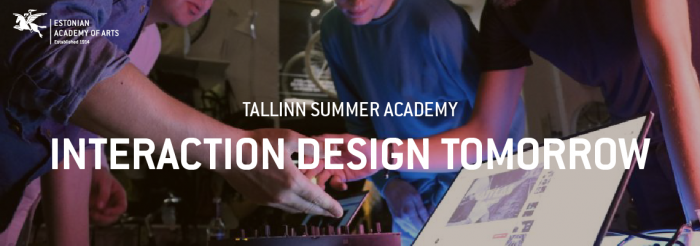
Dates: 6–10 August 2018
Volume: 40 hours, 3 ECTS
Location: Estonian Centre of Architecture, Põhja pst 27a, Tallinn, Estonia
Number of participants: max 20
Cost: FREE (Please note that this course is meant for higher education students only)
Registration deadline: 6th of May
Aimed at design students; no programming skills necessary.
In addition to the general required materials, candidates are expected to submit a letter of motivation explaining why they are applying and outlining their experience with Interaction Design so far (max A4). Students are expected to bring their own sketchbooks, markers and laptops.
Over the course of a week you will learn about the foundations, history and possible futures of interaction design within a studio environment. This 5-day hands-on workshop provides a solid foundational knowledge of user experience (UX) design for new practitioners, as well as an in-depth exploration of interaction design for experienced designers. The course gives participants space and guidance to delve deeply into theoretical and practical aspects of interaction design by investigating contemporary issues and proposing design solutions.
Through a series of lectures, films, historic case studies and studio practice, participants will explore the nature and aesthetics of interaction design in the digital and physical space, in individual and group studio practice from ideation and the iterative design process to presentations and critique.
Learning outcomes:
- Learn about design foundations, theory, history and practice
- Understand how to look at problems from social, technological, economic and cultural perspectives
- Practice design research and synthesis
- Learn how to be creative in the digital realm
- Improve your ability to present your design concepts
- Practice working individually and in small teams
More information and link to registration: https://www.artun.ee/summeracademy/interaction-design-tomorrow/
Postitas Olivia Verev — Püsilink
Summer Academy: Interaction Design Tomorrow
Esmaspäev 06 august, 2018 — Reede 10 august, 2018
Avatud akadeemia

Dates: 6–10 August 2018
Volume: 40 hours, 3 ECTS
Location: Estonian Centre of Architecture, Põhja pst 27a, Tallinn, Estonia
Number of participants: max 20
Cost: FREE (Please note that this course is meant for higher education students only)
Registration deadline: 6th of May
Aimed at design students; no programming skills necessary.
In addition to the general required materials, candidates are expected to submit a letter of motivation explaining why they are applying and outlining their experience with Interaction Design so far (max A4). Students are expected to bring their own sketchbooks, markers and laptops.
Over the course of a week you will learn about the foundations, history and possible futures of interaction design within a studio environment. This 5-day hands-on workshop provides a solid foundational knowledge of user experience (UX) design for new practitioners, as well as an in-depth exploration of interaction design for experienced designers. The course gives participants space and guidance to delve deeply into theoretical and practical aspects of interaction design by investigating contemporary issues and proposing design solutions.
Through a series of lectures, films, historic case studies and studio practice, participants will explore the nature and aesthetics of interaction design in the digital and physical space, in individual and group studio practice from ideation and the iterative design process to presentations and critique.
Learning outcomes:
- Learn about design foundations, theory, history and practice
- Understand how to look at problems from social, technological, economic and cultural perspectives
- Practice design research and synthesis
- Learn how to be creative in the digital realm
- Improve your ability to present your design concepts
- Practice working individually and in small teams
More information and link to registration: https://www.artun.ee/summeracademy/interaction-design-tomorrow/
Postitas Olivia Verev — Püsilink
06.08.2018 — 11.08.2018
Summer Academy: The Anatomy of Couture
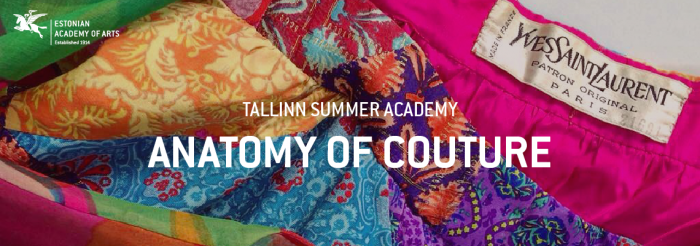 Dates: 6-11 August 2018
Dates: 6-11 August 2018
Volume: 6 days, 3 ECTS
Location: Tallinn City Museum, Vene Str 17
Number of participants: max 22
Cost: FREE (Please note that this course is meant for higher education students only.)
Registration deadline: 6th of May
Students applying for a slot in this workshop are asked to submit a CV and cover letter describing why they wish to participate and whether they have any old article of clothing to bring with them to Estonia. The cover letter should also reveal why they are interested in restoring textiles and haute couture.
Aim of the course:
- bring a disappearing specialized manual skill to Estonia and teach it to Estonian and international students
- restore articles of clothing in the collection of some Estonian museum and thereby contribute to the preservation of an exhibit item with historical value.
Course content:
The course provides practical and theoretical knowledge of how to restore old clothing – selection of fabrics, stitches and seams, treatment of the material, how different materials age, how to care for and restore different fabrics. In the course of the workshop, students will learn about the internal structure of haute couture clothing, allowing them to later create period-specific silhouettes or re-interpretations of them – pattern solutions for textiles, materials. The course will provide knowledge and skills that can be used to get closer to the secrets of high fashion. All of the participants in the course will be able to restore a part of dresses brought in by the lecturer.
The course teaches handicraft skills that have become a rarity, something highly sought-after among professionals. ˇFewer and fewer people practise these skills in a world dominated by modern fashions. Today clothing made 40, 50, even 100 years ago are held in high regard, as they involved the use of original patterns, hand stitching, high-quality tailoring. To this point, the creation of such clothing have remained shrouded in arcane mystery – they seem easy to imitate at first glance but it is impossible to achieve the right effect without knowing what is going on “under the dress.”
The course is mainly meant for fashion design, theatre design, restoration and design students.
More information and link to registration: https://www.artun.ee/summeracademy/the-anatomy-of-couture/
Postitas Olivia Verev — Püsilink
Summer Academy: The Anatomy of Couture
Esmaspäev 06 august, 2018 — Laupäev 11 august, 2018
 Dates: 6-11 August 2018
Dates: 6-11 August 2018
Volume: 6 days, 3 ECTS
Location: Tallinn City Museum, Vene Str 17
Number of participants: max 22
Cost: FREE (Please note that this course is meant for higher education students only.)
Registration deadline: 6th of May
Students applying for a slot in this workshop are asked to submit a CV and cover letter describing why they wish to participate and whether they have any old article of clothing to bring with them to Estonia. The cover letter should also reveal why they are interested in restoring textiles and haute couture.
Aim of the course:
- bring a disappearing specialized manual skill to Estonia and teach it to Estonian and international students
- restore articles of clothing in the collection of some Estonian museum and thereby contribute to the preservation of an exhibit item with historical value.
Course content:
The course provides practical and theoretical knowledge of how to restore old clothing – selection of fabrics, stitches and seams, treatment of the material, how different materials age, how to care for and restore different fabrics. In the course of the workshop, students will learn about the internal structure of haute couture clothing, allowing them to later create period-specific silhouettes or re-interpretations of them – pattern solutions for textiles, materials. The course will provide knowledge and skills that can be used to get closer to the secrets of high fashion. All of the participants in the course will be able to restore a part of dresses brought in by the lecturer.
The course teaches handicraft skills that have become a rarity, something highly sought-after among professionals. ˇFewer and fewer people practise these skills in a world dominated by modern fashions. Today clothing made 40, 50, even 100 years ago are held in high regard, as they involved the use of original patterns, hand stitching, high-quality tailoring. To this point, the creation of such clothing have remained shrouded in arcane mystery – they seem easy to imitate at first glance but it is impossible to achieve the right effect without knowing what is going on “under the dress.”
The course is mainly meant for fashion design, theatre design, restoration and design students.
More information and link to registration: https://www.artun.ee/summeracademy/the-anatomy-of-couture/
Postitas Olivia Verev — Püsilink
20.08.2018 — 25.08.2018
Summer Academy: Wood and Design
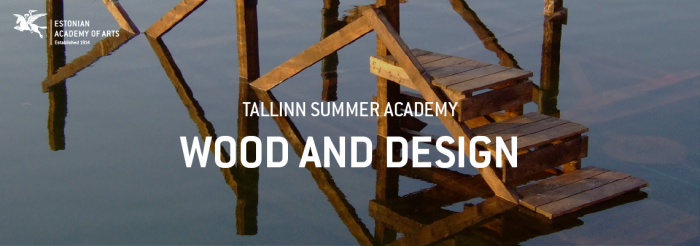
Dates: 20–25 August 2018
Volume: 6 days, 3 ECTS
Location: Loodi Manor, Viljandi, Estonia
Number of participants: max 22
Cost: FREE (Please note that this course is meant for higher education students only)
Registration deadline: 6th of May
In addition to the general admissions requirements, candidates are expected to submit a letter of intent describing their interest in attending the workshop, and a PDF portfolio including documentation of at least one project relevant to the use and/or attributes of wood.
This 6-day workshop Wood and Design in the lush woodlands of Viljandi, Estonia, focuses on the design aesthetics, ecology, and sustainability of wood. Exploring themateri al properties of wood through its use in design, the workshop invites participants to build a set of functional wooden objects for outdoor living with the simplest of means. Participants will utilise wood, as a naturally-occurring renewable material, in two forms: solid slab and left-over scraps from local lumber mills. The workshop is therefore not only community-inspired, with materials sourced or found locally, but also meets the ever-growing need to reclaime and recycle waste wood.
Level:
2nd and 3rd year BA students and MA students in Interior Architecture, Furniture Design, or the equivalent.
More information and link to registration: https://www.artun.ee/summeracademy/wood-and-design/
Postitas Olivia Verev — Püsilink
Summer Academy: Wood and Design
Esmaspäev 20 august, 2018 — Laupäev 25 august, 2018

Dates: 20–25 August 2018
Volume: 6 days, 3 ECTS
Location: Loodi Manor, Viljandi, Estonia
Number of participants: max 22
Cost: FREE (Please note that this course is meant for higher education students only)
Registration deadline: 6th of May
In addition to the general admissions requirements, candidates are expected to submit a letter of intent describing their interest in attending the workshop, and a PDF portfolio including documentation of at least one project relevant to the use and/or attributes of wood.
This 6-day workshop Wood and Design in the lush woodlands of Viljandi, Estonia, focuses on the design aesthetics, ecology, and sustainability of wood. Exploring themateri al properties of wood through its use in design, the workshop invites participants to build a set of functional wooden objects for outdoor living with the simplest of means. Participants will utilise wood, as a naturally-occurring renewable material, in two forms: solid slab and left-over scraps from local lumber mills. The workshop is therefore not only community-inspired, with materials sourced or found locally, but also meets the ever-growing need to reclaime and recycle waste wood.
Level:
2nd and 3rd year BA students and MA students in Interior Architecture, Furniture Design, or the equivalent.
More information and link to registration: https://www.artun.ee/summeracademy/wood-and-design/
Postitas Olivia Verev — Püsilink
20.08.2018 — 24.08.2018
Summer Academy: Numbers and Cognition in the Urban Environment
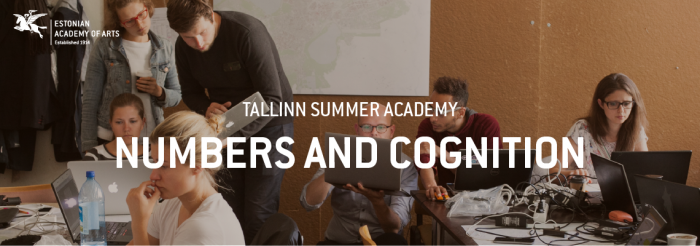
Dates: 20–24 August 2018
Volume: 40 hours, 3 ECTS
Location: Department of Architecture at the Estonian Academy of Arts, Pikk tn 20, 3rd floor, Tallinn
Number of participants: max 25
Cost: FREE (Please note that this course is meant for higher education students only)
Registration deadline: 6th of May
In case of high volume of applications, prospective participants are asked to write an essay one A4-format page in length (approximately 250 words).
Content of the course
This workshop is structured on architecture, numbers and cognition with the focus mainly on public space. Two broader topics pervade the workshop. One of them is more physical, involving translating the world into parameters, and the other is mapping social activities. The broad goal is to find connections between the two sets of topics. The environment around us consists of a number of physically countable and measurable parameters, which we can use to describe it (width of a carriageway, location of a cafe). Which parameters are the best for describing or designing the world? As another important topic, we will map the movements or activities of human masses, using photo and image analysis and Wi-Fi positioning to this end. When, why and where are people moving and how long do they stop – this is an important set of topics, because the quality of space is largely dependent on the presence of people. The participants in the summer academy course will be challenged to find relationships between the physical world and human activity. It will be important to find a means and method for measuring and documenting the environment. Cognition referred to in the course name refers to experience that can be used in future to make decisions to design and re-design space. Ideally, we envision the participants who complete the academy to be capable of imagining and perceiving the implications of 1,000 people or 100 cars passing a point.
Picking key parameters (properties) from this environment has long received attention from urbanism scholars: William H. Whyte, who attempted to trace patterns of use of public space, or Kevin Lynch, who tried to find the mental model people use to understand a city.
The late 20th century brought a rise in computing power, which has resulted in change in the accuracy and use of many calculations. In the past, it was not conceivable to calculate trajectories from one building to another manually, but it is now possible. Alongside this trend, a completely new field has arisen: various kinds of simulations. Simulations make it possible to model traffic, pedestrians or both at the same time. Gathering data has become more intensive with a focus moving from gathering qualitative data to collecting quantitative data. A large part of the summer school involves field observations, which helps instil intuition in participants as to what a given indicator means. This will also give them a clearer understanding of the computational processes and outcomes and they will be able to rationally assess the outcomes of some simulation or facts presented to them.
Participants will become well-versed in methods and means for quantitatively and qualitatively documenting the street-level space, which can in turn later be used for analysis of other places. The participant will also receive an overview of and access to software used in the framework of the workshop. At the end of the summer school, all of the data that was gathered will be made public to allow third parties to use them in their projects – for example, to plan more fluid, safer traffic conditions.
More information and link to registration: https://www.artun.ee/summeracademy/numbers-and-cognition/
Postitas Olivia Verev — Püsilink
Summer Academy: Numbers and Cognition in the Urban Environment
Esmaspäev 20 august, 2018 — Reede 24 august, 2018

Dates: 20–24 August 2018
Volume: 40 hours, 3 ECTS
Location: Department of Architecture at the Estonian Academy of Arts, Pikk tn 20, 3rd floor, Tallinn
Number of participants: max 25
Cost: FREE (Please note that this course is meant for higher education students only)
Registration deadline: 6th of May
In case of high volume of applications, prospective participants are asked to write an essay one A4-format page in length (approximately 250 words).
Content of the course
This workshop is structured on architecture, numbers and cognition with the focus mainly on public space. Two broader topics pervade the workshop. One of them is more physical, involving translating the world into parameters, and the other is mapping social activities. The broad goal is to find connections between the two sets of topics. The environment around us consists of a number of physically countable and measurable parameters, which we can use to describe it (width of a carriageway, location of a cafe). Which parameters are the best for describing or designing the world? As another important topic, we will map the movements or activities of human masses, using photo and image analysis and Wi-Fi positioning to this end. When, why and where are people moving and how long do they stop – this is an important set of topics, because the quality of space is largely dependent on the presence of people. The participants in the summer academy course will be challenged to find relationships between the physical world and human activity. It will be important to find a means and method for measuring and documenting the environment. Cognition referred to in the course name refers to experience that can be used in future to make decisions to design and re-design space. Ideally, we envision the participants who complete the academy to be capable of imagining and perceiving the implications of 1,000 people or 100 cars passing a point.
Picking key parameters (properties) from this environment has long received attention from urbanism scholars: William H. Whyte, who attempted to trace patterns of use of public space, or Kevin Lynch, who tried to find the mental model people use to understand a city.
The late 20th century brought a rise in computing power, which has resulted in change in the accuracy and use of many calculations. In the past, it was not conceivable to calculate trajectories from one building to another manually, but it is now possible. Alongside this trend, a completely new field has arisen: various kinds of simulations. Simulations make it possible to model traffic, pedestrians or both at the same time. Gathering data has become more intensive with a focus moving from gathering qualitative data to collecting quantitative data. A large part of the summer school involves field observations, which helps instil intuition in participants as to what a given indicator means. This will also give them a clearer understanding of the computational processes and outcomes and they will be able to rationally assess the outcomes of some simulation or facts presented to them.
Participants will become well-versed in methods and means for quantitatively and qualitatively documenting the street-level space, which can in turn later be used for analysis of other places. The participant will also receive an overview of and access to software used in the framework of the workshop. At the end of the summer school, all of the data that was gathered will be made public to allow third parties to use them in their projects – for example, to plan more fluid, safer traffic conditions.
More information and link to registration: https://www.artun.ee/summeracademy/numbers-and-cognition/
Postitas Olivia Verev — Püsilink
13.08.2018 — 17.08.2018
Summer Academy: Clay 3D Printing
Dates: 13–17 August 2018
Volume: 40 hours, 2 ECTS
Location: Estonian Academy of Arts, Estonia pst 7, room No E-426
Number of participants: max 13
Cost: FREE (Please note that this course is meant for higher education students only.)
Registration deadline: 6th of May
In addition to the general required materials, candidates are expected to submit a letter of motivation explaining why they are applying and what is their experience with 3D printing so far (max A4).
The Department of Ceramics at the Estonian Academy of Arts invites you to participate in an international Clay 3D Printing workshop. Ceramics have properties that allow it to be used in the most disparate fields. We usually don’t consider that ceramics are all around us, not just in kitchenware, but also in bathrooms, swimming pools and public interiors, and that stoves and fireplaces, even houses, are made of fired clay. Top-quality ceramics can be found in medical equipment, audio technology and air and space industry. Clay is sensitive, flexible and versatile material with its’ own technological limits which the participants will learn during the workshop.
3D printing in clay allows us to print three-dimensional objects or models at lower cost and more easily. For ceramists, it represents a new technological possibility, while for others it gives a chance to convert digital sketches into real three-dimensional objects. During this course, participants will learn the technical skills of 3D printing and printing in clay: creating G-code and STL files, plus preparation of the clay and printing. The aim of the course is to use innovative thinking to discover new ways of printing, using clay and the printed ceramics. The end of the workshop will feature a pop-up exhibition of the objects created.
The workshop is aimed at ceramics, architecture and design students, but admission is open to all students who have had experience with 3D printing and know how to create 3D files. Every participant needs to bring their own laptop. All other materials are provided, and students may keep the objects they print.
Homework assignment for selectees:
1) students will be asked to bring one of their 3D-file, print ready
2) students will be asked to come up with a design they would like to execute in the workshop. They will be asked to give a presentation on the design in person. As in a hackathon, they will then set to work on the problem.
More information and link to registration: https://www.artun.ee/summeracademy/clay-3d-printing/
Postitas Olivia Verev — Püsilink
Summer Academy: Clay 3D Printing
Esmaspäev 13 august, 2018 — Reede 17 august, 2018
Dates: 13–17 August 2018
Volume: 40 hours, 2 ECTS
Location: Estonian Academy of Arts, Estonia pst 7, room No E-426
Number of participants: max 13
Cost: FREE (Please note that this course is meant for higher education students only.)
Registration deadline: 6th of May
In addition to the general required materials, candidates are expected to submit a letter of motivation explaining why they are applying and what is their experience with 3D printing so far (max A4).
The Department of Ceramics at the Estonian Academy of Arts invites you to participate in an international Clay 3D Printing workshop. Ceramics have properties that allow it to be used in the most disparate fields. We usually don’t consider that ceramics are all around us, not just in kitchenware, but also in bathrooms, swimming pools and public interiors, and that stoves and fireplaces, even houses, are made of fired clay. Top-quality ceramics can be found in medical equipment, audio technology and air and space industry. Clay is sensitive, flexible and versatile material with its’ own technological limits which the participants will learn during the workshop.
3D printing in clay allows us to print three-dimensional objects or models at lower cost and more easily. For ceramists, it represents a new technological possibility, while for others it gives a chance to convert digital sketches into real three-dimensional objects. During this course, participants will learn the technical skills of 3D printing and printing in clay: creating G-code and STL files, plus preparation of the clay and printing. The aim of the course is to use innovative thinking to discover new ways of printing, using clay and the printed ceramics. The end of the workshop will feature a pop-up exhibition of the objects created.
The workshop is aimed at ceramics, architecture and design students, but admission is open to all students who have had experience with 3D printing and know how to create 3D files. Every participant needs to bring their own laptop. All other materials are provided, and students may keep the objects they print.
Homework assignment for selectees:
1) students will be asked to bring one of their 3D-file, print ready
2) students will be asked to come up with a design they would like to execute in the workshop. They will be asked to give a presentation on the design in person. As in a hackathon, they will then set to work on the problem.
More information and link to registration: https://www.artun.ee/summeracademy/clay-3d-printing/
Postitas Olivia Verev — Püsilink
06.08.2018 — 08.08.2018
Summer Academy: The Contemporary Art Field in Estonia
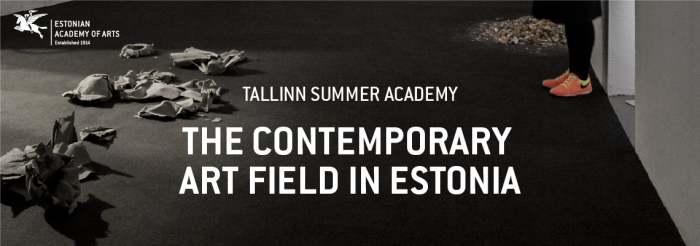
Dates: 6-8 August 2018
Location: ARS Art Factory, Pärnu mnt 154, Tallinn, room no 111
Volume: 24 academic hours, 1 ECTS
Number of participants: max 22
Cost: FREE (Please note that this course is meant for higher education students only.)
Registration deadline: 6th of May
In addition to the general required materials, candidates are expected to submit a letter of motivation explaining why they are applying (max A4).
The Contemporary Art Field in Estonia short course is meant for international art history or curatorship students who are who are studying contemporary Estonian or Baltic art, are interested in the contemporary Estonian art world and in working with Estonian artists, curators or art historians, plan to enrol at the Estonian Academy of Arts and are looking for an overview of how the local art landscape operates. The workshop will be led by Academy of Arts teaching staff member, head of the Centre for General Theory Subjects and freelance art critic Maarin Ektermann.
The short course provides an overview of how contemporary art scene in Estonia functions – the most important organizations, the movers and shakers, the currently important and active artists from different disciplines, and the types of events being held. The causal factors behind the art scene are also explored, starting from the restoration of independence, Estonian art in the context of the regional and broader international art scene, and much more.
Topics to be discussed:
- Trends in contemporary art (social criticism, new painting, installation – architectural approach – public space, photography, graphic design, applied arts, etc.). Examples of artists and their work.
- The functioning of the art scene – who is active (what types of professions are feasible in Estonia), how are they funded (Ministry of Culture, Cultural Endowment of Estonia, creative industries, the law that requires a 1% art budget for public buildings, private capital, the art market, artists and work), general diagnostics – bottlenecks and success stories. The development of the art scene since the 1990s, illustrated by keywords.
- Central institutions and platforms (public and private capital-based). What is characteristic for, e.g. galleries, town galleries in county seats, creative industries centres, etc.? Other examples: artists’ residencies, culture factories, Tallinn Art Hall, Tartu Art Museum, Temnikova and Kasela Gallery, Centre of Contemporary Art Estonia, Estonian Artists’ Association.
- Formats and locations of various events. Concentration of art scene mainly in Tallinn and Tartu – what’s going on elsewhere?
More info and link to registration: https://www.artun.ee/summeracademy/the-contemporary-art-field-in-estonia/
Postitas Olivia Verev — Püsilink
Summer Academy: The Contemporary Art Field in Estonia
Esmaspäev 06 august, 2018 — Kolmapäev 08 august, 2018

Dates: 6-8 August 2018
Location: ARS Art Factory, Pärnu mnt 154, Tallinn, room no 111
Volume: 24 academic hours, 1 ECTS
Number of participants: max 22
Cost: FREE (Please note that this course is meant for higher education students only.)
Registration deadline: 6th of May
In addition to the general required materials, candidates are expected to submit a letter of motivation explaining why they are applying (max A4).
The Contemporary Art Field in Estonia short course is meant for international art history or curatorship students who are who are studying contemporary Estonian or Baltic art, are interested in the contemporary Estonian art world and in working with Estonian artists, curators or art historians, plan to enrol at the Estonian Academy of Arts and are looking for an overview of how the local art landscape operates. The workshop will be led by Academy of Arts teaching staff member, head of the Centre for General Theory Subjects and freelance art critic Maarin Ektermann.
The short course provides an overview of how contemporary art scene in Estonia functions – the most important organizations, the movers and shakers, the currently important and active artists from different disciplines, and the types of events being held. The causal factors behind the art scene are also explored, starting from the restoration of independence, Estonian art in the context of the regional and broader international art scene, and much more.
Topics to be discussed:
- Trends in contemporary art (social criticism, new painting, installation – architectural approach – public space, photography, graphic design, applied arts, etc.). Examples of artists and their work.
- The functioning of the art scene – who is active (what types of professions are feasible in Estonia), how are they funded (Ministry of Culture, Cultural Endowment of Estonia, creative industries, the law that requires a 1% art budget for public buildings, private capital, the art market, artists and work), general diagnostics – bottlenecks and success stories. The development of the art scene since the 1990s, illustrated by keywords.
- Central institutions and platforms (public and private capital-based). What is characteristic for, e.g. galleries, town galleries in county seats, creative industries centres, etc.? Other examples: artists’ residencies, culture factories, Tallinn Art Hall, Tartu Art Museum, Temnikova and Kasela Gallery, Centre of Contemporary Art Estonia, Estonian Artists’ Association.
- Formats and locations of various events. Concentration of art scene mainly in Tallinn and Tartu – what’s going on elsewhere?
More info and link to registration: https://www.artun.ee/summeracademy/the-contemporary-art-field-in-estonia/
Postitas Olivia Verev — Püsilink
20.04.2018 — 22.04.2018
Ringmajanduse hackathlon “Looming ettevõtlusesse”
20-22 aprill toimub Ida-Virumaa Kutsehariduskeskuse (IVKHK) Narva kutseõppekeskuses (Kreenholmi 45, Narva) häkaton TeamLab “Looming ettevõtlusesse”, kus saab koos erinevate valdkondade loomeinimeste, käsitööliste, tudengite, disainerite, ühiskonnaaktivistide, ettevõtjate ja teiste huvilistega kogenud mentorite juhendamisel luua uusi loovaid lahendusi, ühendades omavahel loovust ja ringmajandust.
“Tänane Euroopa liigub üha pikemate sammudega ringmajanduse suunas ja pikas perspektiivis on eesmärgiks jäätmevaba ühiskond. Nn “zero-waste” mudel ei tähenda siiski mitte null-jäätmeteket, vaid seda tuleb mõista eelkõige jäätmete ladestamise lõpetamise ja tekkivate jäätmete uuesti materjalina ringlusse suunamisena,” räägib ringmajandusest jäätmekäitluse ekspert (PhD) Jana Põldnurk ning lisab, et ringmajanduse tõhus elluviimine eeldab panust ja teadlikkuse tõusu nii jäätmetekitajate kui ka potentsiaalsete ringlussevõtjate ehk teisese toorme kasutajate poolelt, samuti uute kogumisskeemide arendamist ja teisese toorme väärtustamist.
TeamLab on 48-tunnine äriideede maraton, mille eesmärgiks on uute innovaatiliste äriideede valideerimine, meeskondade moodustamine, tootearendus sealjuures prototüüpimine ja ärimudeli loomine.
Eesmärgiga tunnustada osalejaid meie partnerid toovad järgmised auhinnad:
– Ühele meeskonnale on Loov Eesti poolt auhinnaks koht ainulaadses veebipõhises arendusprogrammis PESA, mis alustab november 2018. Selle vahendusel saab loomeettevõtja tuge oma idee edasirendamiseks. Auhinna väärtus on 1500€.
– Ühele meeskonnale on Hollandi Suursaatkonna poolt välja pakutud teenusepakett nende toote edasiseks arendamiseks. Auhinna väärtus on 300€.
– Eesti Rõiva- ja Tekstiililiit pakub ühele meeskonnale stipendiumi ning mentorlus-programmi tekstiiliettevõttes;
– Pank Luminor pakub ka omalt poolt eriauhinda ühele meeskonnale.
Registreerimine kuni 19. aprillini: Osalemine TeamLab’is koos koolituse, mentorluse, lõuna-, õhtusöögi ja kohvipausidega maksab õpilastele ja tudengitele 5€, kõikidele teistele huvilistele 15€.
Tasumine toimub sularahas kohapeal või MTÜ Loov Eesti pangakontole: EE211010220245381228. Tasumisel ülekandega palume selgituseks märkida “TeamLab 20-22.04 2018”. Arve väljastatakse peale makse laekumist.
Registreeri end üritusele SIIN.
Lisainfot ürituse kohta leiad SIIT.
Ürituse korraldajad on Loov Eesti, Ida-Viru Loomemajanduskeskus ja Textileinventory. TeamLab on osa “Loov Eesti+Maa” programmist, mida toetavad EAS Euroopa Regionaalarengu Fondi vahenditest, Briti Nõukogu ja Euroakadeemia.
Postitas Mart Vainre — Püsilink
Ringmajanduse hackathlon “Looming ettevõtlusesse”
Reede 20 aprill, 2018 — Pühapäev 22 aprill, 2018
20-22 aprill toimub Ida-Virumaa Kutsehariduskeskuse (IVKHK) Narva kutseõppekeskuses (Kreenholmi 45, Narva) häkaton TeamLab “Looming ettevõtlusesse”, kus saab koos erinevate valdkondade loomeinimeste, käsitööliste, tudengite, disainerite, ühiskonnaaktivistide, ettevõtjate ja teiste huvilistega kogenud mentorite juhendamisel luua uusi loovaid lahendusi, ühendades omavahel loovust ja ringmajandust.
“Tänane Euroopa liigub üha pikemate sammudega ringmajanduse suunas ja pikas perspektiivis on eesmärgiks jäätmevaba ühiskond. Nn “zero-waste” mudel ei tähenda siiski mitte null-jäätmeteket, vaid seda tuleb mõista eelkõige jäätmete ladestamise lõpetamise ja tekkivate jäätmete uuesti materjalina ringlusse suunamisena,” räägib ringmajandusest jäätmekäitluse ekspert (PhD) Jana Põldnurk ning lisab, et ringmajanduse tõhus elluviimine eeldab panust ja teadlikkuse tõusu nii jäätmetekitajate kui ka potentsiaalsete ringlussevõtjate ehk teisese toorme kasutajate poolelt, samuti uute kogumisskeemide arendamist ja teisese toorme väärtustamist.
TeamLab on 48-tunnine äriideede maraton, mille eesmärgiks on uute innovaatiliste äriideede valideerimine, meeskondade moodustamine, tootearendus sealjuures prototüüpimine ja ärimudeli loomine.
Eesmärgiga tunnustada osalejaid meie partnerid toovad järgmised auhinnad:
– Ühele meeskonnale on Loov Eesti poolt auhinnaks koht ainulaadses veebipõhises arendusprogrammis PESA, mis alustab november 2018. Selle vahendusel saab loomeettevõtja tuge oma idee edasirendamiseks. Auhinna väärtus on 1500€.
– Ühele meeskonnale on Hollandi Suursaatkonna poolt välja pakutud teenusepakett nende toote edasiseks arendamiseks. Auhinna väärtus on 300€.
– Eesti Rõiva- ja Tekstiililiit pakub ühele meeskonnale stipendiumi ning mentorlus-programmi tekstiiliettevõttes;
– Pank Luminor pakub ka omalt poolt eriauhinda ühele meeskonnale.
Registreerimine kuni 19. aprillini: Osalemine TeamLab’is koos koolituse, mentorluse, lõuna-, õhtusöögi ja kohvipausidega maksab õpilastele ja tudengitele 5€, kõikidele teistele huvilistele 15€.
Tasumine toimub sularahas kohapeal või MTÜ Loov Eesti pangakontole: EE211010220245381228. Tasumisel ülekandega palume selgituseks märkida “TeamLab 20-22.04 2018”. Arve väljastatakse peale makse laekumist.
Registreeri end üritusele SIIN.
Lisainfot ürituse kohta leiad SIIT.
Ürituse korraldajad on Loov Eesti, Ida-Viru Loomemajanduskeskus ja Textileinventory. TeamLab on osa “Loov Eesti+Maa” programmist, mida toetavad EAS Euroopa Regionaalarengu Fondi vahenditest, Briti Nõukogu ja Euroakadeemia.
Postitas Mart Vainre — Püsilink
14.04.2018
Teadusmarss alustab kell 12.15 EKA uue maja juurest
Teadus- ja arendusosakond
Laupäeval, 14. aprillil toimub Teadusmarss 2018 eesmärgiga meenutada avalikkusele teadussaavutuste hindamatut rolli meie igapäevaelus. Ühtlasi tahetakse juhtida tähelepanu teaduse rahastamisega seotud probleemidele ning tuletatakse Riigikogule ja Valitsusele meelde nende ammust lubadust eraldada teadusele 1% SKP-st. Teadusmarsiga liitujaid oodatakse kell 12.15 Eesti Kunstiakadeemia uue maja juurde (Põhja pst 7), et sealt üheskoos läbi vanalinna Toompea Lossi platsile liikuda.
Eesti Vabariigi Valitsuse ja Riigikogu tahtmatus pidada kinni aastate eest antud lubadusest eraldada teadus-ja arendustegevusele 1% SKP-st toob eeloleval laupäeval tänavatele teaduse toetuseks marssima nii teadlased kui ka teadussõbrad. Aktsiooni eesmärk on panna valitsuse ja riigikogu liikmetele südamele vajadust seista teadmistepõhise Eesti eest ning meenutada nii neile kui ka avalikkusele, et enamus tänapäeva hüvedest on sündinud tänu teadlaste tööle.
Kell 13.00 algab Toompea Lossi väljakul teaduse ja kõrghariduse muredele ja rõõmudele pühendatud kõnekoosolek, kus omapoolse sõnavõtuga esineb Haridus-ja Teadusminister Mailis Reps. Teadlaste poolt võtavad sõna maailma 1% enimtsiteeritud teadlaste hulka kuuluv Keemilise ja Bioloogilise Füüsika Instituudi juhtivteadur ning Eesti Teaduste Akadeemia uurija-professor Anne Kahru, Tallinna Ülikooli ERC grandi toonud Liisi Keedus, itaalia päritolu Tallinna Ülikooli semiootika professor Daniele Monticelli jt. Samuti kõnelevad Rahvusvahelise Kaitseuuringute Keskuse direktor Sven Sakkov ning Tartu Ülikooli Nõukogu liige Ants Nõmper. Eesti Kunstiakadeemia poolt võtab sõna meie doktorikooli juhataja, prof Krista Kodres.
12.30 algab Lossi platsil ka eeskätt lastele suunatud teadusteemaline üritus, mida sisustavad geeniusest leidur ning teaduse populariseerija Aare Baumer, teadusteater Kolm Põrsakest ja sõbrad.
Eelmisel aastal Ameerika Ühendriikidest alguse saanud Teadusmarsi liikumine leidis kiiresti palju poolehoidjaid. Nii näiteks toimuvad laupäeval Tallinna-aktsiooniga sarnased üritused veel enam kui 230 linnas üle maailma, eesmärgiga juhtida tähelepanu teaduse olulisusele ning teadlaste probleemidele.
Postitas Mart Vainre — Püsilink
Teadusmarss alustab kell 12.15 EKA uue maja juurest
Laupäev 14 aprill, 2018
Teadus- ja arendusosakond
Laupäeval, 14. aprillil toimub Teadusmarss 2018 eesmärgiga meenutada avalikkusele teadussaavutuste hindamatut rolli meie igapäevaelus. Ühtlasi tahetakse juhtida tähelepanu teaduse rahastamisega seotud probleemidele ning tuletatakse Riigikogule ja Valitsusele meelde nende ammust lubadust eraldada teadusele 1% SKP-st. Teadusmarsiga liitujaid oodatakse kell 12.15 Eesti Kunstiakadeemia uue maja juurde (Põhja pst 7), et sealt üheskoos läbi vanalinna Toompea Lossi platsile liikuda.
Eesti Vabariigi Valitsuse ja Riigikogu tahtmatus pidada kinni aastate eest antud lubadusest eraldada teadus-ja arendustegevusele 1% SKP-st toob eeloleval laupäeval tänavatele teaduse toetuseks marssima nii teadlased kui ka teadussõbrad. Aktsiooni eesmärk on panna valitsuse ja riigikogu liikmetele südamele vajadust seista teadmistepõhise Eesti eest ning meenutada nii neile kui ka avalikkusele, et enamus tänapäeva hüvedest on sündinud tänu teadlaste tööle.
Kell 13.00 algab Toompea Lossi väljakul teaduse ja kõrghariduse muredele ja rõõmudele pühendatud kõnekoosolek, kus omapoolse sõnavõtuga esineb Haridus-ja Teadusminister Mailis Reps. Teadlaste poolt võtavad sõna maailma 1% enimtsiteeritud teadlaste hulka kuuluv Keemilise ja Bioloogilise Füüsika Instituudi juhtivteadur ning Eesti Teaduste Akadeemia uurija-professor Anne Kahru, Tallinna Ülikooli ERC grandi toonud Liisi Keedus, itaalia päritolu Tallinna Ülikooli semiootika professor Daniele Monticelli jt. Samuti kõnelevad Rahvusvahelise Kaitseuuringute Keskuse direktor Sven Sakkov ning Tartu Ülikooli Nõukogu liige Ants Nõmper. Eesti Kunstiakadeemia poolt võtab sõna meie doktorikooli juhataja, prof Krista Kodres.
12.30 algab Lossi platsil ka eeskätt lastele suunatud teadusteemaline üritus, mida sisustavad geeniusest leidur ning teaduse populariseerija Aare Baumer, teadusteater Kolm Põrsakest ja sõbrad.
Eelmisel aastal Ameerika Ühendriikidest alguse saanud Teadusmarsi liikumine leidis kiiresti palju poolehoidjaid. Nii näiteks toimuvad laupäeval Tallinna-aktsiooniga sarnased üritused veel enam kui 230 linnas üle maailma, eesmärgiga juhtida tähelepanu teaduse olulisusele ning teadlaste probleemidele.
Postitas Mart Vainre — Püsilink

